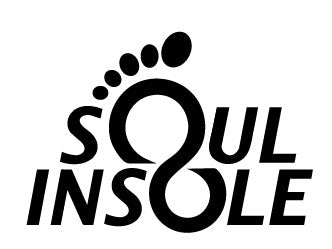High Arches

High Arches: How do I Know if My Arches Are High; How to Relieve Pain in the Arch of the Foot
There are several reasons why a person may experience pain and discomfort around the arches of their foot. Different individuals have unique sets of arches with the obvious function of supporting the entire weight of the body. However, individuals with a more pronounced height in their arches have been found to be more susceptible to a condition known as pes cavus, roughly translating into “hollow foot” which can come with a lot of pain due to extra pressure on the metatarsal heads (ball of the foot) and the Heel.
How Can I Tell If My Arches Are High?
This isn’t one of those scenarios where you need to go for expensive medical procedures. Rather, taking a simple test – the wet footprint test will quickly let you know if you have this condition or not. This test involves standing with a wet foot on a piece of cardboard paper. For someone with this problem, the extended nature of the arch will lead to an imprint which depict only the ball and heel portions of the foot.
A healthy foot absorbs a lot of shock during movement. However, in a person with high arches, the foot is unable to absorb the heel strike during the gait cycle and loses its ability to stabilize or balance the body as the individual engages in normal everyday activities. As a consequence, the soft tissues of the foot as well as the lower leg are put under immense stress with pain capable of spreading to other areas including the ankle, knee, hips as well as the lower back. It is also likely that the individual may not be able to comfortably fit into a shoe.
Causes of High Arches (pes cavus)
The causes of high arches can be broken down into the following categories:
- Natural/genetics: It is most common for high arches to be hereditary and run in the family
- Neuromuscular disease: Examples of which include the poliomyelitis, Charcot Marie Tooth disease and the likes
- Nerve trauma
- Activities such as dance and ballet where the feet are constantly in a pointed position, and where the feet are very muscular
Complications
The severity of the arch height as well as activity levels placed on the foot will affect the amount of joint motion available for the foot. Symptoms will vary, and it is therefore possible that certain people with high arches may encounter no pain, while others will have mild to severe complications.
In general, some of the problems associated with high arches include the following:
- It may become difficult finding a footwear that is deep enough, with a high enough instep to accommodate the feet
- Arch inflexibility and stiffness
- Foot length may become shortened
- There may be pain and stiffness in the medial arch
- Excruciating pain in the ball of foot and lesser toes
- Pain and discomfort may spread to knees, hips and even lower backs
- Tight lower calf muscles
When the arches are high, there is often a tendency that it will result in a situation which is more commonly known as supination (aka: under pronation). The arch loses its ability to absorb the shock of the entire body movement, pushing the extra weight to other edges of the foot. At this stage, the individual becomes increasingly prone to Iliotibial (IT) band pain, knee pain, Achilles tendonitis and even plantar fasciitis.
How to Relieve Arch of the Foot Pain
In the absence of any neurological condition, the best possible cause of action in the event that you have high arches is proper management. The main solution available today involves the use of orthotics – insoles that provide great support for high arches. They function by providing just the right amount of arch support to properly distributing the body weight evenly across the foot, relieving excessive pressure from the heels and ball of the foot and restoring a steady gait for daily activities. Although it is important to support the arch, most arch supports are designed to stop over pronation, which means that it is possible that these support will exacerbate the over supination of a high arched foot. With this being said, it can also be very valuable to combine an orthotic with a heel wedge. A heel wedge will provide heel support that is thicker on the outer edge to stop the foot from excessive supination.
Summary
- High arches are usually inherited. If you develop high arches over a short period of time, it is recommended to see a doctor.
- High arches result in increased weight on your heels and the balls of your feet. In addition, high arched feet often under-pronate (aka: over supinate), decreasing the foot’s natural shock absorption abilities.
- Adding arch support can significantly increase comfort for those with high arches.
- Few insoles are high enough and strong enough to provide the support necessary for those with very high arches.
SHOP INSOLES FOR EXTRA HIGH ARCHES

This content is not intended to be a substitute for professional medical advice, diagnosis, or treatment. Always seek the advice of your physician or other qualified health provider with any questions you may have regarding a medical condition.


